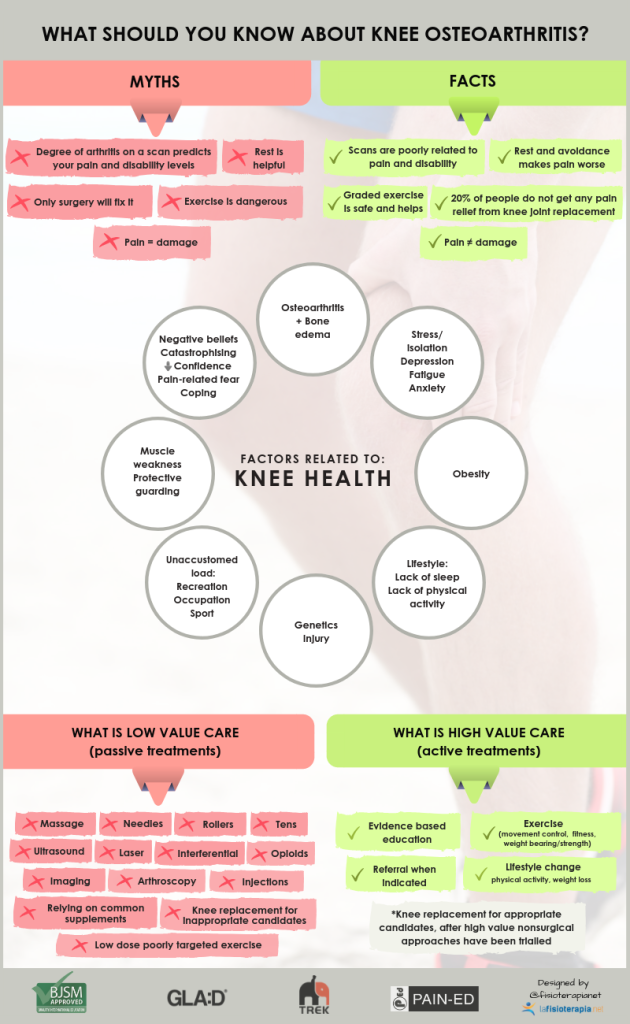What is Knee Osteoarthritis?
Knee osteoarthritis (OA) is a common joint disorder that affects millions of people worldwide. It is a wear and repair condition that occurs when the cartilage that cushions the bones in the knee joint wears away over time, leading to pain, stiffness, and limited mobility. However, there is an abundance of compelling research that signifies the importance of movement-based therapy on joint and cartilage health.
Common Myths and Facts Associated with Knee Osteoarthritis:
What Can I do if I Have Knee Osteoarthritis:
While there is no cure for knee OA, strength and conditioning can be an effective way to manage symptoms, improve function and independence, as well as quality of life. Strength and conditioning is a type of physical training that are designed to increase muscle strength,
power, flexibility, endurance and overall fitness. These exercises can help to reduce symptoms and improve joint function in people with knee OA. There are a variety of exercises that can be done to strengthen the muscles around the knee joint, including but not limited to quadriceps, hamstrings, glutes, and calf muscles.
Here are a list of some home exercises for knee Osteoarthritis:
1. Straight leg
2. Step-ups
3. Sit to stand
In addition to strength and conditioning exercises, it is important to incorporate stretching and cardiovascular exercise into your routine. Stretching can help to improve flexibility and range of motion in the knee joint, while cardiovascular exercise along with dieting can help to improve overall fitness and reduce weight, which can help to reduce stress on the knee joint.
It is important to note that before beginning any strength and conditioning program, it is important to consult with your healthcare provider or a qualified fitness professional. They can help to develop a program that is safe and effective for your individual needs and goals.
Overall, strength and conditioning exercises can be an effective way to manage symptoms and improve quality of life in people with knee OA. By strengthening the muscles around the knee joint, improving flexibility and range of motion, and reducing weight through cardiovascular exercise & amp; dieting, people with knee OA can reduce pain and improve joint function, leading to a better quality of life.
- 7 Key Exercise Therapy Recommendations for Hip and Knee Osteoarthritis ~ Knee health infographics – GLA:D AU (gladaustralia.com.au)
At TPM, our GLA:D Classes use education and exercise to help with daily activities. You will work on strengthening your body as well as learning to move correctly and manage symptoms to improve pain.
See our Senior GLA:D Accredited Physiotherapist Scott, to find out more about our GLA:D Program!




